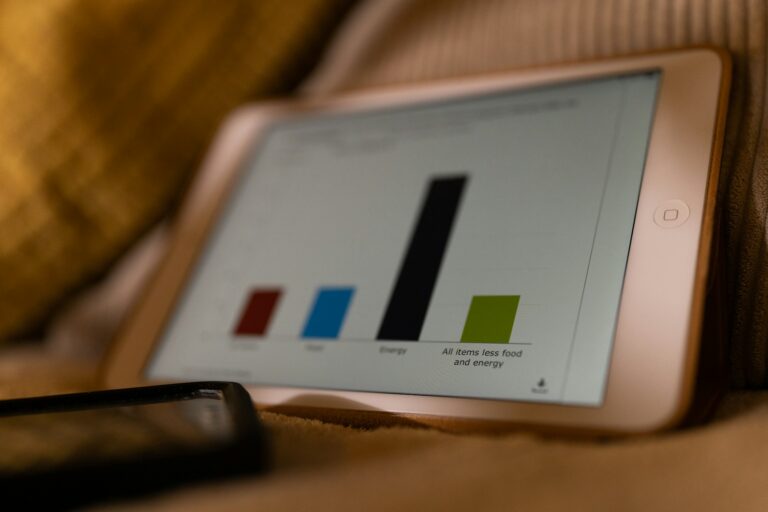
How to Calculate Monthly Expenses in Your 2024 Budget
Tracking expenses can help inform smart money management, ensuring you have clear oversight and control over your finances. While the thought of examining the money you spend may be daunting at first, this is one of the first steps in setting a monthly budget that works for you (i.e., one that covers your basic needs and wants without leaving you feeling like you’re living a life of denial).
When setting up your 2024 budget, try a “conscious spending” approach. Instead of scrounging to save money, allow yourself those treats you truly enjoy while cutting costs on those things that don’t improve your happiness or quality of life. This makes for a sustainable approach to saving, investing, and general money management and can result in a more stable financial future.
This guide explains how to calculate your expenses according to the conscious spending mindset.

Table of Contents
What’s considered a monthly expense?
So, just what qualifies as an expense? At its core, an expense is anything that you are spending money on — it’s the money that’s going out, not coming in. This could include essentials like rent, utility bills, gas, food, child care, and health insurance, as well as nonessentials, like beauty treatments, entertainment (e.g., your Netflix subscription), and travel.
Since many expenses (like rent) are inherently calculated on a monthly basis, most people make monthly budgets. This is also a manageable time frame to work with if you are employed and paid in a set period once or twice per month. A monthly budget is also easier to manage than an annual budget since you have a smaller period to keep track of.
To make your conscious spending plan even clearer and easier to adhere to, it’s best to break it down into four distinct categories:
- Fixed costs
- Investments
- Savings
- Guilt-free spending
Examples of fixed-cost monthly expenses
Fixed costs refer to expenses that you can’t forego. These are the things that you can’t eliminate because, let’s face it, you can’t really live without them. Although you can rarely cut fixed costs completely, reviewing them can help you find ways to reduce them. They could include:
- Housing costs like rent, renters insurance, or mortgage payments
- Utilities like electricity, gas, and water
- Food, including groceries, takeout, and restaurant dining
- Transportation costs like gas, car payments, or public transportation tickets
- Internet
- Cell phone bills
- Health insurance
Examples of investments as monthly expenses
Putting money into investments that grow can help your money keep up with inflation. While some investments perform best long term, there are also short-term investment possibilities. Investments could include monthly payments into the following:
- Retirement accounts like a 401(k) or Roth IRA
- Bond funds
- Stocks
- Certificates of deposit (CDs)
- Money market accounts (MMAs)
- Treasury bills
Examples of savings as monthly expenses
Savings can be used for various purposes. You can set up sub savings accounts to divert money for these distinct needs, making it easier to keep track. Possible types of savings include extra money for:
- An emergency fund for unforeseen expenditures, from health care bills to computer repairs
- Big-ticket purchases, like a down payment on a house or car
- Predictable expenses that aren’t paid as frequently (e.g., car maintenance)
Examples of guilt-free spending as monthly expenses
Finally, with the above essentials taken care of, you have your guilt-free spending left. This is the stuff you buy that you don’t necessarily need to survive but that improves your quality of life and brings you joy. Examples could include:
- Clothing
- Dining out
- Travel
- Entertainment
How to calculate your monthly expenses
Calculating your monthly expenses doesn’t require a pricey personal finance manager or a complicated budget calculator. Start by simply making a list of all the money that goes out every month — you can use an expense-tracking app to keep track if you’re not sure — or just look at your last three months of bank statements. Then, divide your expenses into the categories described above. Any expense should fit into one of these labels.
Divide expenses into budget categories to establish a budgetary guideline. Some people stick to the 50/20/30 rule, for example, which dictates that 50% of monthly income (after taxes) should go toward obligatory expenses, 20% should go toward repaying debts (like student loans) or savings, and the remaining 30% should go toward everything else.
It’s up to you to establish a conscious spending ratio that fits your needs and lifestyle. Once you’ve categorized your expenses and come up with a percentage-based budget, you can finetune your spending. For example, let’s say your household income is $60,000 a year after taxes. That’s $5,000 per month. Here’s how you might calculate your monthly expenses based on the percentages for your four categories:
| Overview of Monthly Expenses | ||
| Category of Spending | Percentage | Total |
| Fixed costs | 50% | $2,500 |
| Investments | 10% | $500 |
| Savings | 20% | $1,000 |
| Guilt-free spending | 20% | $1,000 |
Keep in mind that your spending plan may evolve with time. For example, you may get a promotion and make more money, which means it’s time to rework how you’ll categorize it. Alternatively, you might incur new expenses, like personal loans, each with its own unique interest rates, terms, and lender repayment plans. These points will change your budgeting template significantly.
Understanding your own “money dials”
As you determine how to structure your spending plan, it’s helpful to understand your “money dials.” Basically, these define why you spend money the way you do. Ideally, you will be spending money on things you actually love — if you earn more, you can turn up the dial on that kind of guilt-free spending. People may get excited about different things, from spa treatments to luxury goods to travel.
For example, if you are passionate about health and fitness, your gym membership is a worthy monthly cost. If you have kids but enjoy an occasional romantic night out with your partner, paying for child support like a babysitter is a great investment. The point is to not deny yourself the things you love. Learn more about money dials and how to determine your own.
A new approach to financial success
Tallying up your monthly expenses might seem scary. However, it’s important to realize that tracking your expenses doesn’t mean you’ll suddenly have to stop spending on things that make you happy. You can still be financially savvy while making expensive purchases. The key to success is taking a structured approach and essentially becoming your own financial advisor.
Instead of viewing money management as a means of restricting yourself, look at it as a way of better organizing your money so you can get the most out of it. It can also eliminate possible fears related to money — which make conscious spending even harder to handle. A critical step to being able to manage your money intelligently is being able to talk about it openly. Find out how to make conscious spending work for you.
Frequently Asked Questions:
What is Money Management?
Money management is an umbrella term encompassing all facets of financial responsibility. Managing your money means effectively spending, investing, saving, and budgeting your personal finances. Understanding and mastering money management is key to financial stability.
Budgeting is unsustainable. Start “Conscious Spending” instead.
As seen on the IWT podcast, my Conscious Spending Plan helps you buy the things you love, guilt-free.



